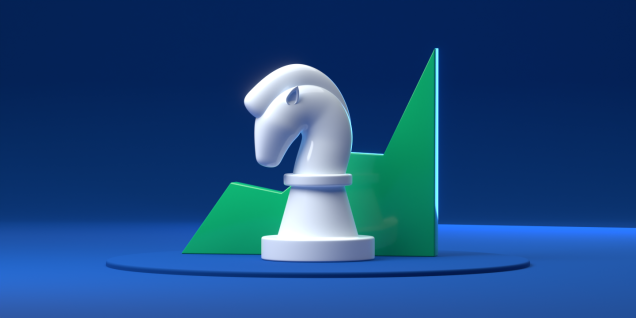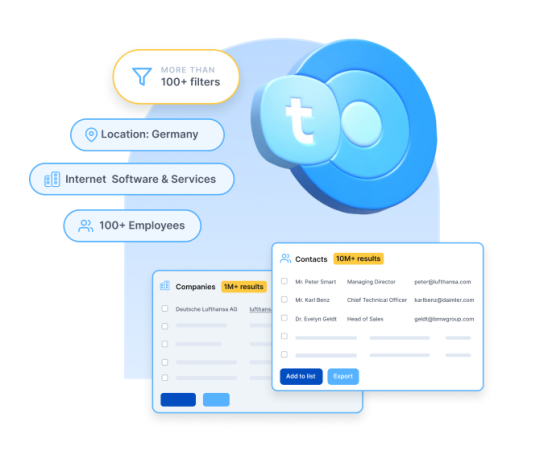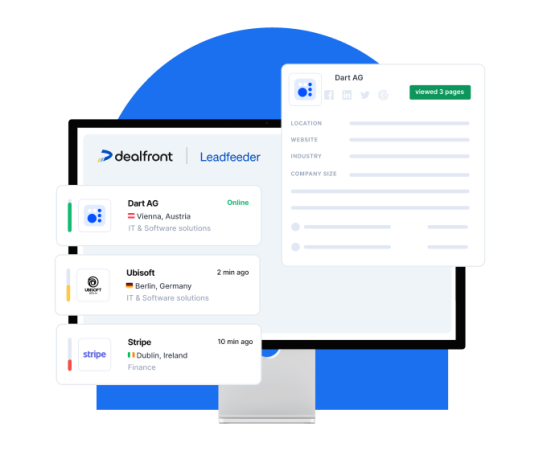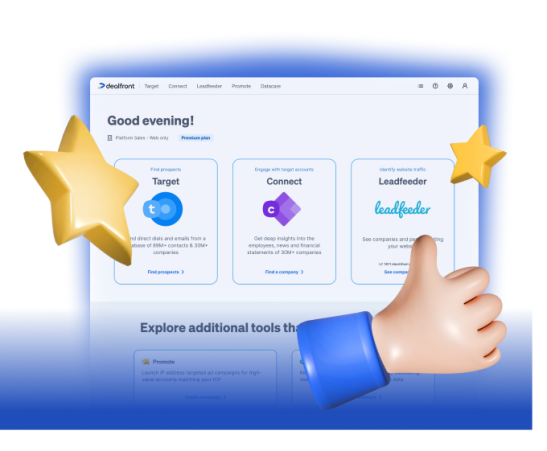The B2B sales world can be ruthless, to say the least. Even if you’re selling the most innovative products and services in the industry, if you fail to plan, you’re likely to fail.
But simply creating a strategy is just the first step . You need a plan that understands your customers, then uses that knowledge to edge out your competitors to seal the deal.
Here, we’ll provide you with all the pieces of the puzzle to create a robust strategy that’s as comprehensive as it is effective. Keep reading if you’re ready to fine tune your approach business to business selling to one that changes as the needs of your market and customers change.
What is B2B sales?
Business to business sales (B2B) is the process of selling products and services directly to other businesses or B2B buyers. This is the counterpart to B2C (business-to-consumer) sales, in which products and services are directly sold to consumers.
Who needs a B2B sales strategy?
The professional need for a B2B sales strategy spans many industries. The following groups in particular benefit from B2B sales strategies and tactics:
Manufacturers and suppliers utilize B2B sales methods to connect with distributors of raw materials and components that they use in production.
Service providers employ B2B sales strategies when offering specialized services. These providers include agencies like IT consulting firms, marketing firms, accounting firms, and software development companies that target other businesses as clients.
Professional service providers, such as lawyers, architects, consultants, and financial advisers employ B2B sales tactics when offering their expertise to other businesses.
Technology providers, including businesses that sell hardware, software, telecommunications services, or cloud-based technology to other companies, utilize B2B sales strategies.
Distributors and wholesalers work as intermediaries between manufacturers and retailers and employ B2B sales strategies daily. These strategies come into play as they sell bulk products that are then resold in retail environments.
The list is obviously not exhaustive. Any business selling a product or a service to another business, as opposed to individual customers, can utilize B2B strategies.
B2B Sales Strategy Examples
There are many different types of B2B sales. Each requires slightly different tactics and approaches. With that in mind, let’s explore some of the different strategies for different types of sales in B2B.
Suppliers - The goal of a supplier’s sales strategy is not only to attract new customers but to ensure they keep coming back. It focuses on building relationships and loyalty by delivering the best customer experiences. The strategy will aim to build confidence in the quality of your products and the reliability of your service. This is often achieved through optimizing supply chains and introducing tools such as point-of-sales software to speed up transactions.
Distributors - A distribution business will need to ensure that it builds a reputation for comprehensive and reliable distribution channels. That’s why a key part of their strategy is building confidence in producers that their products will reach the end customer in a timely and reliable manner.
Software as a service (SaaS) - SaaS strategies will be to firstly understand the needs of target customers and secondly to build a brand reputation that will convince users that the product is powerful, intuitive, flexible, and resilient.
Institutions - The strategies will vary depending on the nature of the organization. A charity, for example, will aim to build its ethical reputation and publicize the effectiveness of its activities and investments. It will look to demonstrate to businesses that their brand will benefit from association with the charity.
Government - Although government organizations wouldn’t generally have a sales strategy, selling to government departments will be an important part of other business strategies. A focus for this type of B2B sales will be to ensure compliance with government procurement regulations and to deliver a value-for-money proposition.
How to develop aB2B sales strategy framework
Any B2B sales process should be uniquely designed with your business, clients, and goals in mind. Considering the following elements will help you build a strategy that works best for your situation.
Establish whether you have a product- or sales-led growth company and form a plan
The first step in B2B sales strategy development is to establish what drives your company's growth. A product-led growth company uses products to drive growth and establish a customer base, whereas a sales-led growth company relies more on sales to drive growth. Also, product-led growth companies tend to be more self-service, whereas a sales-led growth company will have an active team of salespeople driving the growth.
Once you’ve determined what type of company you have, you can move on to the sales plan. A productive B2B sales plan is important because it’s your playbook to generating B2B leads and sales.
Set expectations and revenue goals
When formulating the sales plan, start by setting clear goals. Sales strategies are not universal for every company. The same is true about the pace of sales and what type of marketing you use to generate leads. Decide on a revenue goal early and have a plan in mind for how you’ll build your strategy to get there.
Align sales and marketing
You can align sales and marketing by taking note of the specific points in the process where potential customers move from one stage to the next. These points help guide your overall sales plan.
If your marketing isn't bringing in qualified prospects that make it to the end of the sales funnel, then you know you should re-evaluate your marketing plan. If you find yourself regularly generating qualified leads that make it all the way through, you know your sales and marketing are well aligned.
If you know where these transitions happen, it's also easier to find and fix any problems or obstacles in the process. This is important in CRM (customer-relationship management). Examples of these conversion points in the sales funnel are:
Touched: The first contact between a lead and a sales rep
Connected: The initial conversations as a lead is qualified into a prospect
Demo booked: Qualified prospect agrees to a demo
Demo completed: A sales rep completes the demo for the potential customer
Offer sent: The negotiation phase, where the sale details get worked out
Purchased: The qualified prospect is now a customer.
At any point along the sales funnel, you may encounter challenges. This is when it helps to stop and take a look at the point in the funnel where things are failing to thrive and adjust your B2B strategy accordingly.
Set up a lead generation and demand generation funnel
Lead generation and demand generation funnels are two concepts found within B2B sales. With a lead generation funnel, you focus on finding and connecting with customers interested in your product or service. The stages of a lead generation funnel are:
Awareness
Interest
Conversion
Follow-up
With a demand generation funnel, you try to create interest and excitement around the product or service. The stages in a demand generation funnel are:
Awareness
Consideration
Evaluation
Conversion
It's important to understand both sales strategies so you can choose the approach that best fits your sales plan.
Target customers and ideal customer profiles
Targeting customers involves finding and focusing on specific groups of people who are most likely to be interested in buying what you're selling. To do this, you create something called an ideal customer profile, which is a description of the perfect customer for your product. In doing so, consider their demographics, needs, locations, and any other relevant information. This will help you understand who your best customers are and how to reach them in the most effective way.
By targeting customers and having an ideal customer profile in your sales plan, you save time and energy by focusing on the people who are most likely to buy from you. This is a great way to customize your marketing and sales strategies and increase your chances of making successful sales.
Define responsibilities within the strategy
Your team must understand the strategies you create and how they should contribute to them. Your sales plan should detail all of this information, including who is responsible for what. By establishing which people are responsible for sales prospecting, various types of meetings, and demos and training, for instance, you'll ensure that everyone's on the same page about the distribution of tasks.
Determine your budget and resources
The old saying goes: You have to spend money to make money. And every sales strategy needs a budget. There will be sales, marketing and advertising expenses. You also have to factor in costs for sales material, training and development as well as the technology to streamline the process.
Digital tools are important in sales and should be factored into the budget. There's a vast range of them on the market, but you won’t need one of everything offered. Start with what will benefit your company, and go from there to find the features you will use most efficiently.
For example, Target by Dealfront can be used to:
Build a list of prospects from over 30 million companies
Find contact details for decision-makers at those companies
Optimize your sales efforts so you target the most fitting accounts
Provide unique, GDPR-compliant data using crawler technology.
With tools like Target you can source reliable data tailored to your company’s requirements.
Identify potential challenges and obstacles
You'll face certain challenges and obstacles in B2B sales that aren't present in B2C sales. The average buying decision in a B2B sales plan involves an average of seven decision-makers. The more salespeople are involved, the more input has to be considered and the longer decision-making tends to take.
Another challenge is the sales cycle. B2B sales have a longer sales cycle than B2C sales. More often than not, a “normal” B2B sales cycle can take four to eight months.
B2B marketing also differs from B2C marketing in how leads are generated. B2B marketing focuses on strategies that entice leads to reach out to you. The marketing process should center around tools like search engine optimization to make sure that potential leads end up on your website, content marketing that makes the lead want to learn more about your product, and opt-in email marketing.
In contrast, B2C companies have more platforms available to connect with their customers. Common B2C sales strategies include using popular social media websites like Twitter, Instagram, and Facebook. The ability to go directly to an end consumer tends to be a shorter process overall compared with the longer sales cycle of B2B marketing.
Incorporate promotions
You can incentivize purchasing decisions for your customers using promotional tactics, and it's a great idea to incorporate some of these tactics into your sales strategy. These promotions can include:
Discounts
Limited-time offers
Upgrade or trade-in programs
Loyalty programs
Add-ons
Bundling services or products
Rebates or cashback offers
Just remember to customize your B2B sales promotions to your target market.
Highlight your key selling points
In B2B sales, key selling points are the aspects of your product or service that make it unique. They're the reasons why businesses should buy what you offer instead of the product or service of one of your competitors. You should lay out these selling points during the sales process to convince potential business customers to close the deal. The sales professionals need to show how the product or service stands out and why it's valuable.
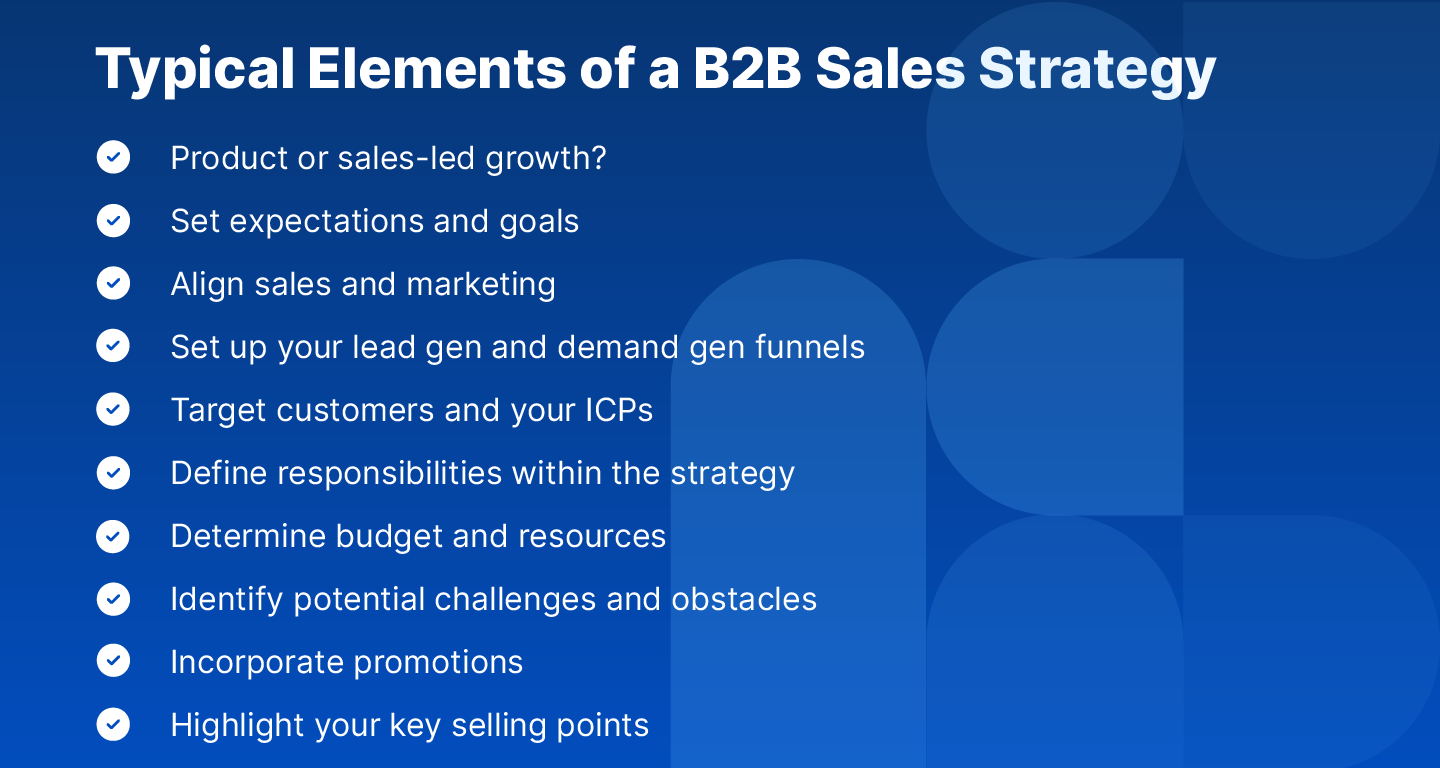
Creating a product-led growth strategy
Finding new customers through direct sales isn't always as effective in today's B2B landscape as it was a decade ago. If your company struggles with direct sales, then you may need to concentrate on creating awareness and generating demand for your product.
Who should use product-led B2B sales techniques?
A product-led growth approach can be useful for any company faced with stalled growth in terms of new customers. A 2022 study reported that 91% of SaaS companies intended to invest in product-led growth in the near future.
B2B inbound sales funnel
The B2B inbound sales funnel is a visualization of the process to help you through your sales strategy. There are different ways to utilize inbound marketing, including making blog posts and ebooks, creating tools, being active on social media, hosting a podcast or a Youtube channel, using search engine optimization so that customers end up on your website, or opt-in email marketing campaigns.
Any type of marketing where the customer makes contact with you instead of the other way around is inbound marketing. The sales funnel is a good guideline for the process no matter what type of marketing plan you use. Each lead that turns into a prospect and eventually a customer will follow the same steps along the funnel.
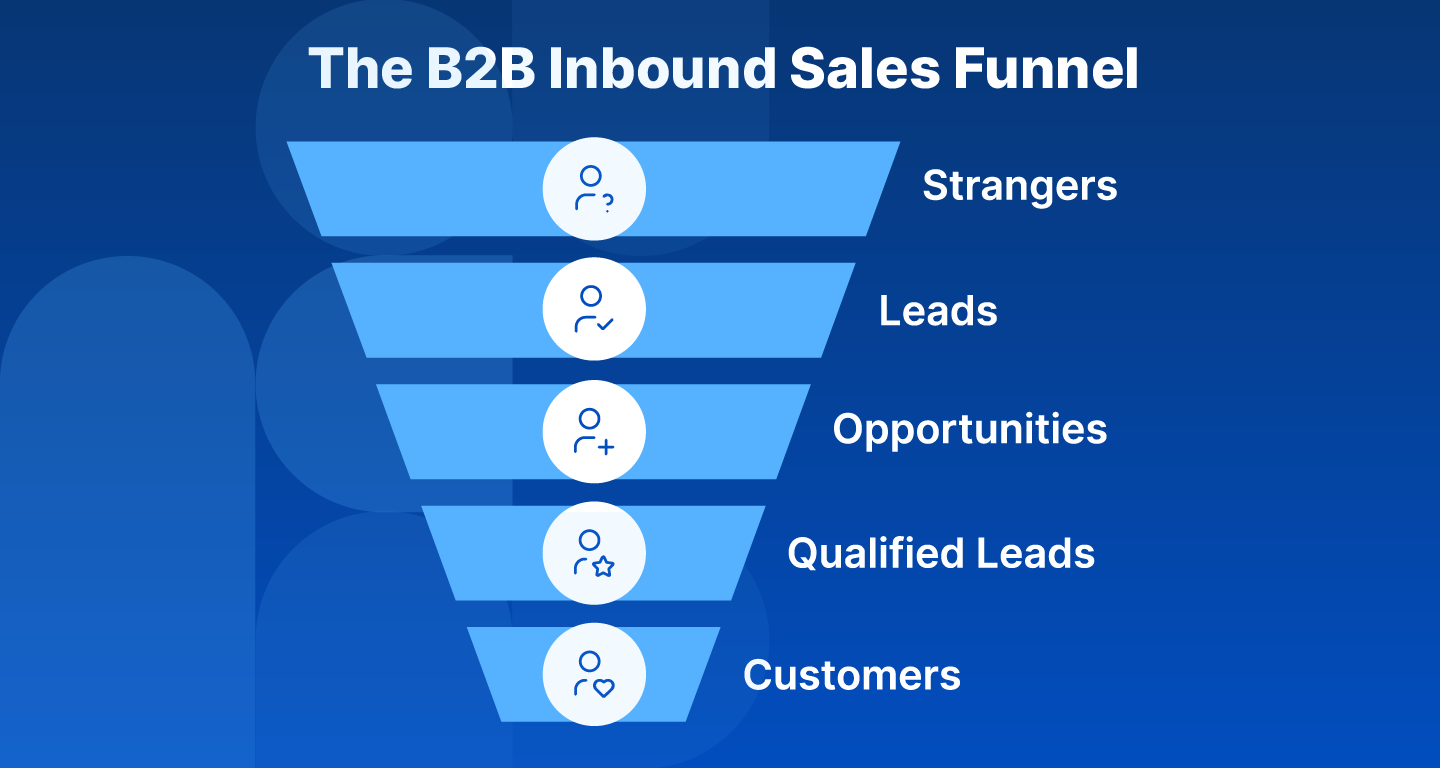
Unaware
Some tools can help you identify sales leads in this phase of the sales funnel, including Leadfeeder to find the companies that are interested in your products by seeing who visits your website.
A discovery call is the initial conversation that takes place between a sales representative and a potential customer. During a discovery call, the sales reps gather information on the prospect to learn whether your product or service is a good fit for their business.
Leads
When the discovery call shows that there is both interest and compatibility, they are now leads you can guide into the next phase: a demo. The demo is where you can showcase the features or benefits of a product or service. The demonstration should target the lead’s interests and needs that were determined during the discovery call stage.
Qualified Leads
Once you’ve started the outreach process, you should qualify your leads as hot, warm, or cold depending on their level of interest so you can adapt your approach. If you want to get ahead of the game, Leadfeeder can help you determine the buying intent of prospects and connect with decision-makers.
Opportunities
Once users grow attached to your product through a free trial, and see the value in what you're offering, they'll feel inclined to sign up for premium tiers or services.
At this point, you're ready to pass the customer from a sales development representative, who finds and entices the leads, to an account executive, who closes deals. The account executive will validate the opportunity, ensuring that the potential sale is worth pursuing. If it is, they'll move the prospect down the funnel.
Customers
When everything has gone to plan, you've accomplished your goal of making a sale and your relationship to the client becomes one of maintenance.
Creating a sales-led growth strategy
With a sales-led growth strategy, you aren’t waiting for the customer to approach you—you’re reaching out to them. This kind of strategy emphasizes sales activities, such as finding customers, making sales, and building relationships, and the sales team generally plays a big role in driving the success of the business.
Who should utilize a sales-led growth strategy?
Though there's value in both product- and sales-led growth strategies, some businesses, such as startups and those in highly competitive markets, benefit more from a sales-led approach. If your company wants to prioritize sales, and if you believe in your sales team's ability to prospect potential customers and successfully execute sales pitches, a sales-led growth strategy may be a good fit.
B2B outbound sales funnel
The B2B outbound sales funnel provides a framework for your B2B sales strategy so you can proactively reach out to potential customers and generate leads. Unlike inbound sales, which focuses on attracting and engaging customers through content and marketing efforts, outbound sales relies on the following outbound activities by marketing teams:
Prospecting: Prospecting involves actively seeking out potential customers to determine if they might be interested in your company's products or services. You can do this through sales software, generate them manually, outsource the task, or buy a leads database. The goal of prospecting is to create a group of potential customers you connect with via a discovery call. Establish an opportunity by identifying the most promising of the leads you generated through prospecting. Then, evaluate their interest, budget, and fit with what you are offering.
Outreach: Now is when you prepare to qualify the leads. Keep your eyes peeled for buying signals from prospects, and use those signals as cues to reach out using cold calls, cold emails, or even face-to-face meetings.
Qualification: Once you’ve started the outreach process, you should qualify your leads as hot, warm, or cold depending on their level of interest so you can adapt your approach. If you want to get ahead of the game, a tool can help you determine the buying intent of prospects and connect with decision-makers. At this point, you're ready to pass the customer from a sales development representative, whose job is finding leads, to an account executive, whose job is to close deals. The account executive will validate the opportunity, ensuring that the potential sale is worth pursuing. If it is, they'll move the prospect down the funnel.
Pitching: This is your moment to make sure the potential customer knows exactly what you can do for them. They’re already interested, but you have to close the gap between interest and a done deal. Utilize your previous research on their needs and pain points during the pitch.
Objection handling: After your pitch, the prospect may have some objections. To be prepared for this stage, make a list of the potential objections so you can have answers and solutions for them at the ready.
Closing the deal: What’s that? That’s the sound of a deal closing. Congratulations! You’ve made it all the way through from the first hint of promising potential to the sales cycle coming to a close. Now you start all over again.

B2B sales tips
How can you ensure that your B2B sales strategy succeeds? The following B2B sales tips will help set you on the right path.
Know your buyer
It might sound obvious, but it’s essential to know your B2B audience. Basic market research is no longer enough; today it's possible to reach customers in more targeted ways than ever.
That’s why many B2B businesses adopt a data-driven approach to understand their audience. Modern B2B businesses can collect information about buyers from many different touch points. This includes their website, customer support, as well as surveys and quizzes.
The right analytics tools can unpack and segment this data, providing actionable demographic and behavioral insights.
With enough information, use tools like HubSpot to craft accurate buyer personas. These paint a picture of the kind of customer your business will appeal to. A B2B buyer persona generally includes the following information:
The demographics of a customer (whether they’re likely to be male or female, their age, etc).
The industry that they work in.
The customer-pain point that your product will solve.
What are their long-term business goals?
Understand the modern B2B buying process
As with the broader business world, B2B has become more digitized in recent years. Previously, most customers followed a standard process. They’d contact a sales representative and negotiate a deal.
Today, most transactions occur online. This is in line with the preferences of most B2B customers, as many as 86% prefer to use digital channels. As such, organizations now focus on providing stronger online experiences.
It’s no longer enough to simply be online; customers prioritize convenience. Your products shouldn’t just be accessible from computers, but also mobile devices. Many B2B businesses now offer a mobile application to cater to these users.
And it’s no longer enough for each of these experiences to be separate. Consumers are used to beginning the sales journey on one device and completing it on another. These connected journeys have been dubbed ‘omnichannel experiences’.
B2B organizations that invest in omnichannel are seeing considerable benefits. A recent McKinsey report shows an average market growth of over 10%.
Fine tune your sales and marketing messages
A ‘one size fits all’ approach to marketing will no longer cut with your audience. Customers expect brand interactions to be tailored to their specific needs. Successful B2B brands now put a strong emphasis on personalization in their marketing.
Studies have shown that this approach to marketing can quickly yield results. Personalization delivers several benefits: On a year-on-year basis, engagement increased by nearly 70%, requests for product demonstrations grew by 4X, and conversion rates doubled.
Your ability to deliver personalized experiences is tied to the first point in this section, knowing your audience. With a strong understanding, you can tailor your marketing to different aspects of your customer base.
You can create segments based on different sorts of customers. For instance, you might create a segment for customers linked to HR. You can then apply this segment so that your marketing only targets the right people.
Put your best people forward
There is much talk about how technology can help power sales. There’s no doubt that the emergence of AI introduces new and interesting ways to sell products. But ultimately, it doesn’t matter if you have the best tools in the world; if salespeople aren’t up to scratch, you won’t sell products.
The best salespeople are experts in their field. They’ve spent years honing their craft, have encountered many different types of customers, and know how to close a sale. And, unlike AI, they’re human beings with emotional intelligence. This means they can build client relationships, understand their unique needs, and tailor solutions around them.
Putting your best people forward begins by equipping employees with the right knowledge to succeed. Consider the following steps:
Implement ‘micro-learning’. Here, managers provide training in short, 15-minute bursts instead of an intensive training course. This method supports engaging, long-term learning.
Create a learning center. This is a space filled with training materials that employees can access whenever they need.
Allowing junior salespeople to shadow experienced team members.
Which B2B sales strategy is for you?
Over the past decade, the B2B sales process has undergone significant changes. Buyers are more research-driven, there are more vendor options, and the paths to purchase are more diverse.
These changes have made reaching B2B leads more challenging, but they also present opportunities for new sales strategies and marketing efforts. To meet and surpass sales quotas, it's crucial to comprehend the dynamics of the modern B2B sales process and employ effective sales tactics.
It doesn’t matter if you adopt a product- or sales-led growth approach, developing solid B2B sales strategies and tactics is necessary to generate leads and align your sales and marketing strategy efforts. All of these efforts combined will lead you to accomplish your goal of completing the sales cycle.
FAQs
What does B2B sales mean?
B2B sales stands for business-to-business sales, and refers to companies that sell their products and services to other businesses, as opposed to directly to consumers.
What are B2B sales?
As B2B sales take place between businesses, they tend to be more complex than B2C sales. Typically, they will have higher order values and a more lengthy sales cycle, as there may be more decision-makers involved in selecting and signing off orders.
What are the main types of B2B sales?
There are several types of B2B sales, including suppliers and producers, service providers such as Software as a Service (SaaS), governments, resellers, and institutions.
How to develop a B2B sales strategy?
A solid B2B strategy will tell everyone in your company how to sell to businesses in a way that’s effective, so it should be carefully planned out. Start by determining whether you will take a product-led or sales-led approach. Ensure sales and marketing teams are aligned, collaborate to set goals, and go from there.
